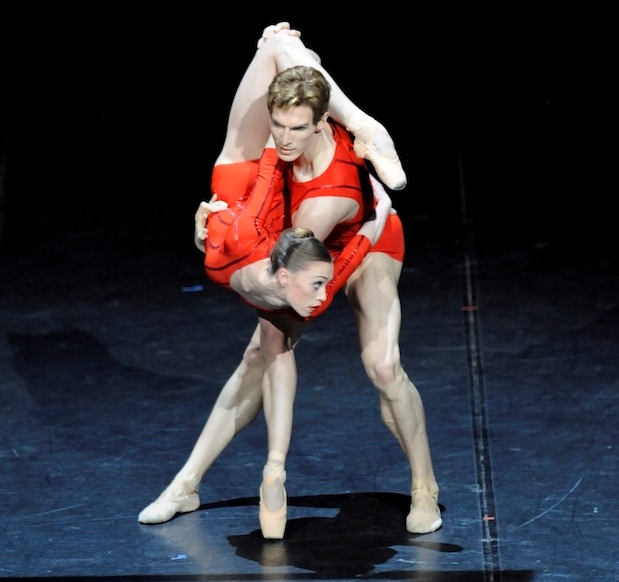Stuttgart Ballet’s rapid ascent to fame is at the core of one of the most interesting chapters of ballet history. Between 1961 and 1973, the year of his untimely death, the South African Royal Ballet-trained choreographer John Cranko turned what had been a fairly standard ballet ensemble into a unique dance phenomenon. Although Stuttgart is still known as a ‘choreographer’s company’, his legacy was never artistically constraining. His successors took his powerful vision on board and broadened the repertoire in line with it. It was thus a pleasure to see the history of the company celebrated through the composite programme Made in Germany, in which past and present were seamlessly combined.
A multifaceted bill, made up mainly of duets and solos, can be risky, as the fairly standard ‘gala-night’ structure can soon become repetitive. But Made in Germany did not seem like the stuff of galas, as each of the three parts came together as a thematically well-conceived showcase for the company’s artistic eclecticism.
Admittedly, the evening did not open with a bang. Cranko’s 1964 Hommage à Bolshoi is a duet made up of numerous references to the old Soviet choreography, as it was originally meant to refer to the Russian company’s first postwar visits to the West. Unfortunately, most of the Soviet repertoire has gone out of fashion these days, and the game of references is not as biting, or even as humorous as it would have been then. But it was logical to place such a subdued duet at the very beginning, because another reference-ridden duet concluded the first part. Created in 1999, Christian Spuck’s Le Grand Pas de Deux is one of the very few successfully comic takes on ballet I have seen. In front of a reclining cow, a ballerina — complete with tutu, tiara, glasses and a red handbag — and her dashing partner dance to Rossini’s La Gazza Ladra, liberally quoting, in a variety of hysterically funny ways, from all the known classics. It is a firework performance, which ties in splendidly with the opening and contrasts equally well with the three cutting-edge UK premières sandwiched in between: Marco Goecke’s 2009 Fancy Goods, Edward Clug’s 2012 Solo from Ssss… and Demis Volpi’s captivating and stunning Little Monsters (2011).
In the second part we went back to the poetics of Cranko’s art, highlighted in the third movement of the 1972 Initials R.B.M.E and in the pas de deux from his Romeo and Juliet (1962). The former is the quintessential expression of love that a choreographer can give to his dancers. As indicated by the ‘initials’ in the title, Cranko created it for Richard Cragun, Birgit Keil, Marcia Haydée and Egon Madsen. The brief section encapsulates all there is to admire in Cranko’s style, from the fluid lyricism of his duet-making to his unparalleled use of stillness. I am never happy to see the so-called ‘balcony duet’ removed from the context of the Romeo and Juliet ballet, as it is not a bravura number that can be performed on its own. Nevertheless this duet, too, increased one’s appreciation of Cranko’s genius.
It is unfortunate that both items were matched with an insipid duet from Mauro Bigonzetti’s Kazimir’s Colours (1996) and with the choreographically verbose duet from John Neumeier’s 1978 Lady of the Camellias. Alas, choreographic verbosity was also the distinctive feature of the not-so-memorable contemporary works by Douglas Lee, Goekce, Itzik Galili and Spuck presented in the third part. Yet they all highlighted the superb skills of Stuttgart Ballet’s artists.






Comments